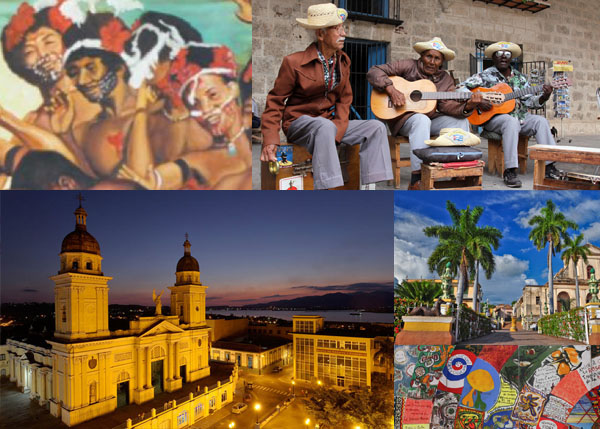11.13 Electroacoustic Music in Cuban Music in the 20th Century (1959-1980).

After World War II, new trends emerged in the arts in general. In music worldwide, we find several such trends: aleatoric music, musique concrète, electronic music, and electroacoustic music. All of these musical trends employ the latest scientific and technical advances of the time. In each creation, the author seeks to reflect his surroundings through mechanical noises and everyday life.
Concrete music emerged in France. It is based on the reproduction of various timbres and sounds from the outside world on magnetic tapes. That is, it consists of recording specific sounds or noises such as screams, engine noises, birdsong, and generally any sound object. These are selected, distorted or not, and finally combined. The speed, intensity, and character of the timbre can be regulated at the composer’s discretion. The works produced and resulting from this trend lack written scores. They can only be performed through mechanical reproduction. Concrete music is used especially in film, theater, and television.
Electronic music originated in Germany, emerging almost at the beginning of musique concrète. Almost the same recording techniques are used. It differs from musique concrète in that the various sounds recorded are produced by electronic devices, that is, electronic sounds are used. These sounds are not created naturally like those of musical instruments. Recordings are made in laboratories specifically designed for this purpose.
Electroacoustic music is nothing more than the blending or fusion of concrete and electronic music. By merging and uniting the two, the possibilities for creation increase. It consists of recording mechanical and everyday noises on magnetic tape, as well as sounds produced by electronic instruments or devices. The creation utilizes the advances and new technologies of the time, such as computing and cybernetics. Currently, sound processors and electronic synthesizers are used.
In 1959, a Festival of Contemporary Cuban Music was held in our archipelago. It served to demonstrate the lack of nationalism that abounded in most of the works created up to that point, in addition to their adherence to formulas that were present in all of them.
After this event, Leo Brouwer and Juan Blanco, followed by Carlos Fariñas, began exploring various techniques, while discovering certain unconventional forms of instrumental performance and using or inventing new musical notation resources.
Juan Blanco’s first electroacoustic musical work, titled “Música para danza,” was released in 1961. It was created with an audio oscillator and tape machines. This prominent Cuban musician learned the techniques of this style at the time from Alejo Carpentier and Luigi Nono.
In 1964, Juan Blanco organized the first public concert of electroacoustic music at the National Union of Writers and Artists of Cuba (17th Street No. 354 between G and H, Vedado, Plaza de la Revolución, Havana). There, he presented his works “Estudios I and II” and “Ensamble V.”
From this concert onward, Juan Blanco launched a campaign to promote electroacoustic music. Countless concerts took place in the capital, tours were held throughout the country, and appearances on television and radio programs were made. A radio program (CMBF Cadena Nacional Radio Station) was launched.
with a weekly frequency and duration of one hour, at the end of the 60s.
Numerous lectures and specialized courses were also offered at universities and other cultural centers, in addition to the publication of articles in newspapers and magazines.
In 1979, Blanco obtained funding from the Cuban Institute of Friendship with the Peoples (ICAP) (17th Street No. 301 between H and I, Vedado, Plaza de la Revolución, Havana), where he worked, to create an electroacoustic studio, of which he is the director. He established the ICAP Electroacoustic Music Workshop (TIME) and taught there. This workshop gave rise to a group of electroacoustic musicians, many of whom have won prizes in international composition competitions. Notable among them are Juan Piñera and Edesio Alejandro (1984, Bourges International Competition, France). Later, the studio was transferred to the Cuban Music Institute of the Ministry of Culture, changing its name to the National Laboratory of Electroacoustic Music (LNME). Through this institution, more than 500 Cuban electroacoustic music works have been produced.
In 1981, organized by Blanco, the International Electroacoustic Music Festival “Primavera en Varadero” was held in Varadero. This event still holds a date, but since 1998, it has been held in the historic center of Havana under the name “Primavera en La Habana.”
Currently, the Electroacoustic Studio is equipped with the most advanced creative equipment. Concerts and national and international tours are organized to showcase the work of Cuban composers, as well as their participation in festivals and competitions.
Among the representative Cuban composers of Cuban electroacoustic music we can mention: Juan Blanco, Juan Marcos Blanco, Carlos Fariñas, Juan Manuel Piñera Infante and Edesio Alejandro.








